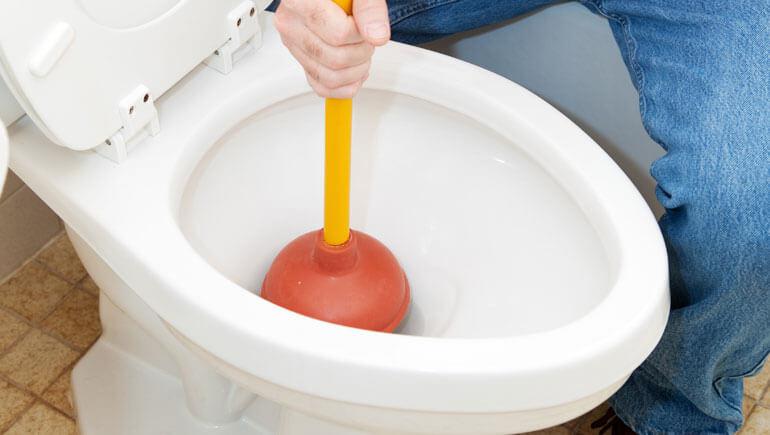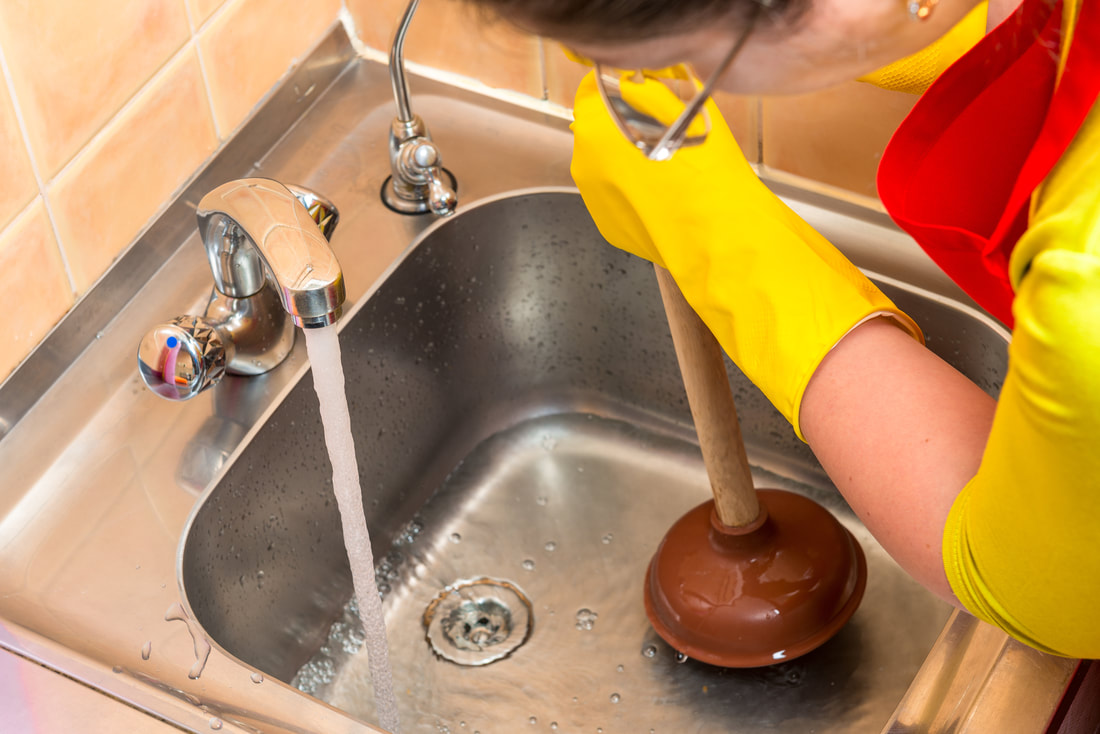Effective Plunger and Drain Cleaner Use: Key Advice
Effective Plunger and Drain Cleaner Use: Key Advice
Blog Article
We have come across this great article on Here's How to Correctly Use a Toilet Plunger below on the net and reckoned it made good sense to discuss it with you on my blog.

Introduction
Appropriate upkeep of house drains pipes is crucial for protecting against obstructions and making sure smooth water flow. One of the trick devices in every house owner's toolkit is the plunger, along with different drainpipe cleaners designed to tackle persistent clogs properly. This post explores just how to use bettors and drain cleansers efficiently to keep your drains pipes flowing easily.
Section 1: Understanding Bettors
Kinds of Plungers
There are numerous kinds of bettors offered, each created for various sorts of drains and clogs. The most usual kinds include mug bettors, flange bettors, and accordion plungers.
How Plungers Work
Plungers work on the principle of developing stress and suction to remove blockages. When effectively used over a drainpipe, they develop a vacuum cleaner that can take out debris or separate blockages.
Picking the Right Bettor
Selecting the ideal plunger relies on the type of drainpipe and the nature of the obstruction. Cup plungers are ideal for sinks and bathtubs, while flange bettors are better fit for commodes as a result of their style.
Common Mistakes with Bettors
Preventing these mistakes ensures reliable plunging: incorrect seal around the drainpipe, inadequate pressure, and not clearing surrounding debris.
Section 2: Using Plungers Successfully
Preparation
Before plunging, make sure the bettor covers the drainpipe entirely and creates a limited seal. Clear any type of noticeable particles around the drainpipe opening.
Technique
Start with gentle plunging motions to develop suction. Rise stress progressively, making use of a constant rhythm. Repeat as necessary until the drainpipe removes.
Fixing Tips
If diving does not work, try readjusting the seal, applying oil jelly for a far better seal, or utilizing a various sort of bettor.
Section 3: Recognizing Drain Cleaning Company
Types of Drainpipe Cleaning Company
Drain cleaners can be chemical or enzymatic. Chemical cleansers use strong chemicals to liquify clogs, while chemical cleaners make use of all-natural enzymes to break down raw material.
Just How Drainpipe Cleaners Job
Chemical cleansers respond with obstructions to liquify them, while enzymatic cleaners break down organic materials like hair and oil without hurting pipes.
Safety and security Factors to consider
Constantly wear gloves and eye protection when using chemical drainpipe cleansers. Ensure adequate air flow and follow manufacturer guidelines meticulously.
Eco-Friendly Alternatives
Take into consideration utilizing vinegar and cooking soda or enzyme-based cleansers for green choices that are much safer for pipes and the setting.
Section 4: Making Use Of Drain Cleaning Company Effectively
Application Methods
Put chemical cleansers directly right into the drain opening. Permit them to work for the advised time before flushing with warm water. Chemical cleaners need to rest over night.
Safety measures
Prevent blending different kinds of cleaners, as this can create toxic fumes. Never make use of chemical cleansers along with a plunger, as splashing can occur.
Managing Stubborn Clogs
For relentless obstructions, take into consideration making use of a pipes snake or calling a professional plumber to stop damage to pipes.
Final thought
In conclusion, recognizing how to make use of bettors and drain cleansers efficiently is important for keeping healthy pipes systems. By picking the right tools and strategies, property owners can take on minor blockages and prevent major pipes issues down the line.
How to Use a Plunger to Unclog a Drain
The humble plunger is a simple yet effective tool for breaking clogs in sinks, tubs and toilets. This handy tool is easy to use. You can make the most of its power if you understand how it works. Ready to dive in? Here’s what you need to know.
Safety First!
Never use a plunger with drain chemicals. Water will splash as you work, and the chemicals can spatter, burning skin and eyes. It’s a good idea to use rubber gloves and wear safety goggles when you work on a clog.
Choose the Right Tool for the Job
Plungers come in two different styles. Sinks, bathtubs and showers require a cup plunger. Like its name suggests, the rubber end is shaped like a cup. Use a flange plunger on toilets. These plungers have a rubber funnel extending from the cup. A plunger needs to be big enough to cover the drain.
Ready, Set, Plunge!
Coat the rim: Coat the plunger rim with petroleum jelly. This helps make a better seal.
Block outlets: Hold a wet rag over nearby outlets such as the overflow vent or the drain in a second sink.
Release air: Insert the plunger at an angle into the water. Water will displace air in the cup. A water-filled cup is more forceful than one filled with air.
Keep the plunger upright: Hold the plunger perpendicular to the drain. Use fast, forceful strokes, but make the first stroke gentle. The first stroke can create a splash if the cup still contains air. Thrust the plunger 15 to 20 times.
Snap off the plunger: The final stroke should be a strong upward motion that ends when the plunger snaps off the drain.
Repeat the process: you may need to repeat this sequence several times. When the water drains away, your work is done. High-five! https://plumbernw.com/blog/how-to-use-a-plunger-to-unclog-a-drain/

Application Methods
Put chemical cleansers directly right into the drain opening. Permit them to work for the advised time before flushing with warm water. Chemical cleaners need to rest over night.
Safety measures
Prevent blending different kinds of cleaners, as this can create toxic fumes. Never make use of chemical cleansers along with a plunger, as splashing can occur.
Managing Stubborn Clogs
For relentless obstructions, take into consideration making use of a pipes snake or calling a professional plumber to stop damage to pipes.
Final thought
In conclusion, recognizing how to make use of bettors and drain cleansers efficiently is important for keeping healthy pipes systems. By picking the right tools and strategies, property owners can take on minor blockages and prevent major pipes issues down the line.
How to Use a Plunger to Unclog a Drain
The humble plunger is a simple yet effective tool for breaking clogs in sinks, tubs and toilets. This handy tool is easy to use. You can make the most of its power if you understand how it works. Ready to dive in? Here’s what you need to know.
Safety First!
Never use a plunger with drain chemicals. Water will splash as you work, and the chemicals can spatter, burning skin and eyes. It’s a good idea to use rubber gloves and wear safety goggles when you work on a clog.
Choose the Right Tool for the Job
Plungers come in two different styles. Sinks, bathtubs and showers require a cup plunger. Like its name suggests, the rubber end is shaped like a cup. Use a flange plunger on toilets. These plungers have a rubber funnel extending from the cup. A plunger needs to be big enough to cover the drain.
Ready, Set, Plunge!
Coat the rim: Coat the plunger rim with petroleum jelly. This helps make a better seal. Block outlets: Hold a wet rag over nearby outlets such as the overflow vent or the drain in a second sink. Release air: Insert the plunger at an angle into the water. Water will displace air in the cup. A water-filled cup is more forceful than one filled with air. Keep the plunger upright: Hold the plunger perpendicular to the drain. Use fast, forceful strokes, but make the first stroke gentle. The first stroke can create a splash if the cup still contains air. Thrust the plunger 15 to 20 times. Snap off the plunger: The final stroke should be a strong upward motion that ends when the plunger snaps off the drain. Repeat the process: you may need to repeat this sequence several times. When the water drains away, your work is done. High-five! https://plumbernw.com/blog/how-to-use-a-plunger-to-unclog-a-drain/

Do you appreciate more info about How To Use Your Toilet Plunger Correctly in 5 Easy Steps? Try to leave a review down the page. We will be happy to see your feelings about this piece. Hoping that you come back again soon. Do you know about another person who is intrigued by the subject? Feel free to promote it. I take joy in your readership.
Schedule Today! Report this page